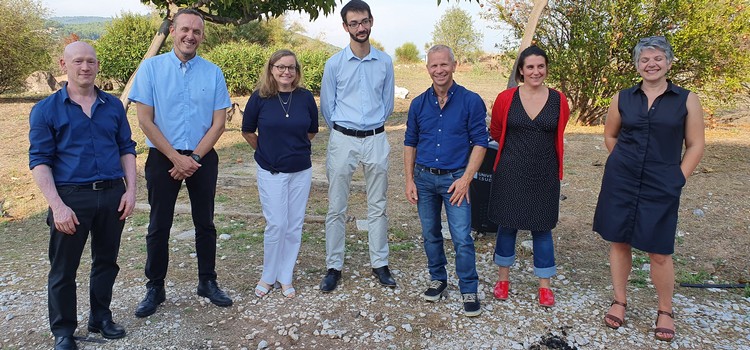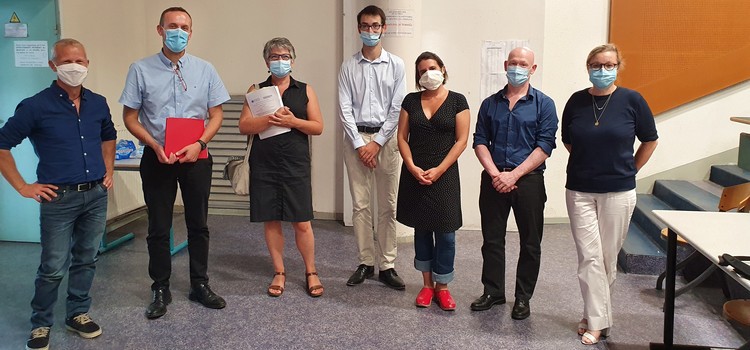PhD thesis defense of Benoît PAIX
- Gérald CULIOLI, Associate Professor, University of Toulon (MAPIEM)
- Jean-François BRIAND, Assistant Professor, University of Toulon (MAPIEM)
will defend his PhD thesis in "Physiology - Biology of organisms - Populations - Interactions", specialty "Microbial ecology", on the topic:
Study of the spatio-temporal dynamics of interactions between the surface microbiota and metabolome of the macroalga Taonia atomaria through a multi-omics approach
on September 17th, 2020, at 01:30PM, at Amphi X300, Seatech, University of Toulon.
The jury is composed of:
- Mme Soizic PRADO, Professeure des universités, Muséum national d’histoire naturelle, Rapporteure
- M. Jean-François GHIGLIONE, Directeur de recherche CNRS, Sorbonne Université, Rapporteur
- Mme Catherine LEBLANC, Directrice de recherche CNRS, Sorbonne Université, Examinatrice
Mme Christine FERRIER-PAGES, Directrice de recherche, Centre Scientifique de Monaco, Examinatrice - Mme Marion PEIRACHE, Référente Milieu Marin, Parc National de Port-Cros, Invitée
- M. Gérald CULIOLI, Maître de conférences, HDR Université de Toulon Directeur de thèse
- M. Jean-François BRIAND, Maître de conférences Université de Toulon, Co-encadrant de thèse
Abstract
As ecosystems engineers and primary producers, marine seaweeds play important roles for other organisms. Chemical interactions with epiphytic microorganisms seem particularly important for their physiology. However, macroalgae-microbiota relationships and the role of environmental parameters remains poorly investigated. The main objective of this PhD thesis was to understand how vary the epiphytic prokaryotic community of the brown alga Taonia atomaria, in relationship with variations of the surface metabolome of the host and what is the influence of the environment on these variations which shape this holobiont model. A multi-omics approach coupling prokaryotic communities studies by metabarcoding and surface metabolites studies by an optimized metabolomics analysis, has been jointly conducted, together with further analyses such as flow cytometry. Studies have thus revealed that the epiphytic microbial community of T. atomaria was specific in comparison with the biofilm communities of rocky substrates, and planktonic ones, suggesting a possible role of the surface metabolome in the structuring of the microbiota. Otherwise, important co-variations between the metabolome and the microbiota at the algal surface were observed at different levels, whether at the thallus or biogeographical scale, or during temporal dynamics. Some environmental parameters seem to be particularly involved in these interactions, such as temperature, copper contamination, but also irradiance. In a context of Global Change, this work provides new perspectives allowing to better understand dynamics of macroalgal-holobionts.
Keywords
Seaweeds, Holobiont, Microbiota, Metabolome



